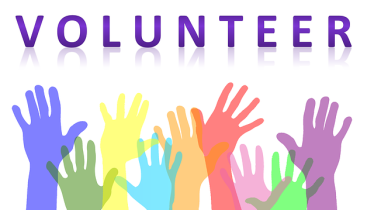When Will Food Insecurity in Rural Western New York Be A Priority?
Turn on the news. When they’re discussing poverty and food insecurity in New York state, who do they talk about? That’s right, the impoverished people of New York City and other urban areas. But what of food insecurity in rural Western New York? When will WE be a priority?
It’s not just the news. Government resources and grant funding opportunities often prioritize food insecurity in areas downstate. Not to diminish those profound areas of need, but Western New York often sits out of sight and out of mind to the power brokers with the means and influence to make a difference.
The NYS Health Department earlier this year released its Report on Food Insecurity Among Adults. It painted a grim picture of hunger, amounting to 1 in 4 adults across NYS experiencing the chronic struggle. (Of note: the ugly hunger realities among children are much worse.)
Food insecurity in rural Western New York is just as profound – if not more – than anywhere else in the state. Here at the northernmost tip of Appalachia, the counties we predominantly serve have the following hunger rates:
- Allegany County – 22%
- Cattaraugus County – 21.6%
- Chautauqua County – 24.8%
How do we put those astronomic hunger numbers in perspective? More importantly, what do we do to address them? Olean Food Pantry’s $1 Million Fundraising Campaign aims to find those solutions.
So Why is Hunger in Western New York Often Overlooked?
Because the faces of hunger here aren’t as easy to identify. The picture of hunger and poverty isn’t always homeless people lined around the block to visit their local soup kitchen. (Although it is worth noting, the record numbers of people Olean Food Pantry serves do routinely stretch around our parking lot.)
It’s the people who make up those lines – their stories and experiences – who paint the true picture of food insecurity in rural Western New York.
Many are not homeless. Many have jobs. Many have multiple jobs. Many are doing everything in their power today to improve their lives tomorrow. There are single parents, senior citizens on a fixed income, justice-involved individuals and persons with disabilities. Some came to us unexpectedly after a recent job loss, representing the 40% of Americans who are just one missed paycheck from food insecurity.
These realities aren’t as easy to spot with the naked eye. Some of them could be your own family members and neighbors, and you wouldn’t know they rely on the Olean Food Pantry. So we often go overlooked, underserved and chronically underfunded.
Overlooked Hunger Crisis: Food Insecurity in Rural Western New York
Admittedly, the hunger rates across all of New York state are alarming. Hunger in America, frankly, is a cause for concern on par with many other humanitarian and natural crises in the world. It’s astonishing that more effort and resources aren’t devoted on a global scale to solving issues of poverty and food insecurity. In the meantime, small nonprofit organizations like Olean Food Pantry must ourselves enact grassroots efforts at the community level.
To be sure, the 39% hunger rate in the Bronx is a profound problem worth addressing. Our argument is simply that the more rural areas of the state suffer at similar rates with a mere fraction of the resources and funding required to provide frontline hunger relief.
In our service area, the nearly 25% of people in Chautauqua, Cattaraugus and Chautauqua counties who face hunger often seem invisible to those holding the purse strings. Food insecurity in rural Western New York is at a crisis level, yet our counties remain on the periphery of the statewide conversation about hunger and poverty.
Imbalance comes in many forms. But it’s most visibly reflected in the allocation of governmental resources. In NYS, billions of dollars in food assistance, anti-poverty programs and community development funds are funneled into downstate communities, while rural regions like ours in WNY are left with a comparative trickle of support we desperately need.
Hunger knows no borders. It’s time for the powers that be to address food insecurity in both urban and rural areas with the urgency and resources it deserves.
Unique Challenges in Rural Food Insecurity
Food insecurity in rural Western New York is exacerbated by several unique factors. Unlike urban areas, where public transportation and densely packed neighborhoods make accessing services somewhat easier, rural residents face significant barriers.
1. Limited Access to Food Pantries & Social Services
Many families in rural counties have to travel long distances to access food service organizations like Olean Food Pantry. Public transportation in most communities here is non-existent, leaving those without reliable transportation to struggle finding ways from A to B.
2. Economic Decline
Our rural counties are experiencing a steady economic decline. What’s more, economic recovery here – when it does come – often lags behind other more well-resourced areas of the country. That’s a reality we share with our fellow Appalachian neighbors.
Factories and local businesses that once provided stable jobs have closed down. With them, the financial security of many families has vanished. Low-wage jobs, often part-time or seasonal, have replaced stable employment, leading to an increased reliance on food pantries.
3. Health Challenges
Many people come sick to the Olean Food Pantry. They just can’t shake a common cold. Or they struggle with more debilitating conditions that won’t improve without a healthy diet.
As the State Health Department report highlights, adults experiencing food insecurity are more likely to suffer from chronic diseases like diabetes, heart disease and asthma. The added strain on rural healthcare systems, coupled with inadequate access to medical facilities, makes the hunger problem even more complex.
4. Lack of Visibility
The rural hunger crisis is not as visible as urban hunger, making it easier for state leaders to overlook. There are no packed shelters or tent cities full of hungry people dominating news coverage. But hunger is just as real for families in Cattaraugus, Allegany, and Chautauqua counties as it is for those in the urban areas.
Olean Food Pantry: Fighting Rural Hunger on the Front Lines
We see these hunger struggles firsthand. Since 2020, the number of people served at Olean Food Pantry has more than doubled! We work tirelessly to meet the increasing demand for food assistance in our community, despite limited resources and minimal external support.
Our food pantry, like many others in rural areas, operates on the goodwill of volunteers and the generosity of local donors. But the need continues to grow. We need sustained support from those with the means to take action. We need advocacy.
Our $1 Million Fundraising Campaign is a call to action – a plea for resources to build capacity and better serve our community. Part of this effort involves raising awareness about the invisible crisis of food insecurity in rural Western New York. We should be a priority in any statewide plan to fight hunger.





A Heartfelt Thank You: $35,450 Raised on Cattaraugus Gives Day – Olean Food Pantry
December 4, 2024 @ 8:00 pm
[…] All of us here at Olean Food Pantry couldn’t be more thrilled. Our Cattaraugus Gives Day campaign on Dec. 3 raised $35,450 toward the local war on hunger! The extraordinary generosity of our community, donors and other supporters demonstrates the spirit of our region and its commitment to fighting the battles that matter. […]
Olean Food Pantry’s New Year’s Resolutions for 2025 – Olean Food Pantry
January 3, 2025 @ 7:24 pm
[…] In this blog, we’ll highlight some of our New Year’s resolutions while recounting some successes from the previous year. The starting line of a new year offers the best perspective on accomplishing our mission of ending local food insecurity. […]
A Day in the Life: A Job Seeker Navigating Hunger & Hope – Olean Food Pantry
January 24, 2025 @ 7:32 pm
[…] job seeker’s experience represents countless individuals living with hunger in Western New York — people who never thought they’d need assistance but find themselves in the grip of hunger due […]
A Day in the Life: A Resilient Mother Battling Hunger with Strength & Love – Olean Food Pantry
January 24, 2025 @ 7:46 pm
[…] morning sun rises over rural Western New York, but the day began several hours earlier for the Resilient Mother, a silent hero navigating the […]
An Ode to Olean Food Pantry Volunteers – Olean Food Pantry
April 4, 2025 @ 2:46 pm
[…] at Olean Food Pantry, something remarkable happens. While hunger and poverty continue to be some of Western New York’s most pressing issues, roughly 2,000 individuals and families receive free food and household supplies they wouldn’t be […]
Hunger Relief Action: How Advocacy & Communication Can Drive Policy Change – Olean Food Pantry
May 22, 2025 @ 1:59 pm
[…] often feels like poverty and food insecurity in WNY sit far down the priority lists of key decision-makers. But we can change […]
Empathy in Action: How Food Pantry Initiatives Are Changing Lives – Olean Food Pantry
June 17, 2025 @ 2:20 pm
[…] moves fast and often forgets the people who are struggling just to keep up – especially here in impoverished Western New York – some people are unfortunately unknowingly unlearning the art of empathy. Why? Because empathy […]
Exploring Local Food Insecurity Data: Understanding the True Scope of Hunger – Olean Food Pantry
June 19, 2025 @ 12:01 am
[…] insecurity is one of the most urgent — yet often overlooked — challenges facing Western New York. At Olean Food Pantry, we see the impact firsthand every […]